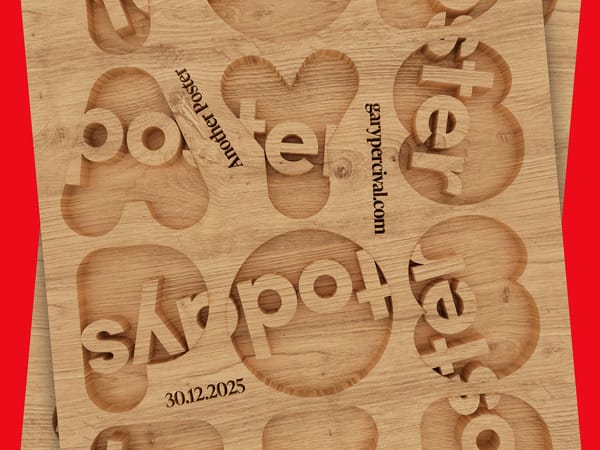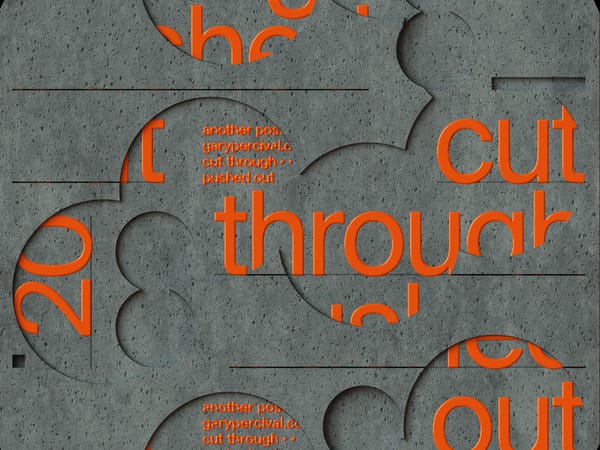Embracing the Discomfort: How Looking Like an Idiot Can Lead to Greater Success
"Embracing moments of uncertainty and allowing ourselves to look foolish can be the catalyst for our greatest achievements."

As creatives, freelancers, and designers, we often feel pressure to present ourselves as polished professionals with all the answers.
But what if embracing moments of uncertainty, even "looking like an idiot," could actually propel our careers forward?
Let's explore how stepping out of our comfort zones and being willing to look foolish can lead to unexpected breakthroughs and greater success.
The Fear of Looking Foolish
We’ve all been there—that moment when you’re about to share a new idea or try something different, and the voice in your head whispers, “What if I look like an idiot?”
Most of us have a deeply ingrained fear of appearing foolish or incompetent. Our natural desire for acceptance, respect, and perceived competence by peers and clients fuels this fear.
This fear can be particularly intense for creatives working in visually orientated fields. After all, our work is highly visible and often subject to immediate judgement.
A graphic designer presenting a bold new concept or a freelance writer pitching an unconventional story idea puts them in a vulnerable position. The temptation to play it safe and stick to tried-and-true approaches is strong.
But here’s the thing: that very discomfort we feel when pushing boundaries is often a sign that we’re on the right track. Growth and innovation rarely happen within the confines of our comfort zones.
The Hidden Benefits of "Looking Like an Idiot"
Learning and Adapting Quickly
When we put ourselves in situations where we might look foolish, we're often operating at the edge of our current abilities. This discomfort pushes us to learn rapidly and think on our feet.
A web designer tackling a new programming language or a copywriter experimenting with an unfamiliar tone may stumble at first but will likely make faster progress than if they had stayed in familiar territory.
Discovering the Unexpected
Some of the most significant breakthroughs in art, design, and technology have come from people willing to try "stupid" ideas.
By giving yourself permission to look silly, you open the door to unconventional approaches that might lead to your next big innovation.
Building Resilience
The more often you put yourself in potentially embarrassing situations, the less power that fear holds over you. You'll develop a thicker skin and the ability to bounce back quickly from setbacks—invaluable skills in the unpredictable world of creative work.
Humanising Yourself to Clients and Colleagues
Contrary to popular belief, admitting ignorance and vulnerability can make you more trustworthy and relatable. Clients often appreciate working with someone who is honest about their limitations and eager to learn.
Expanding Your Network
When you're willing to ask "dumb" questions or reach out to people outside your usual circles, you open yourself up to new connections and collaborations. That moment of potential embarrassment could lead to valuable mentorship or an exciting new project.
Embracing moments of uncertainty and allowing ourselves to look foolish can be the catalyst for our greatest achievements.
Strategies for Embracing Discomfort
How can we actually put this into practice? Here are strategies for cultivating a willingness to "look like an idiot" in pursuit of growth:
Start Small: You don't have to dive into the deep end right away. Look for low-stakes opportunities to step slightly out of your comfort zone. This might mean sharing a work-in-progress with a trusted colleague or trying a new technique on a personal project.
Reframe "Failure" as Learning: Instead of seeing mistakes or awkward moments as failures, view them as valuable data points. What can you learn from this experience? How can it inform your future work?
Cultivate Curiosity: Approach new situations with genuine curiosity rather than a need to prove yourself. Ask questions, even if you think they might sound basic. Often, others will appreciate your willingness to learn.
Embrace the Beginner's Mindset: There’s freedom in being a novice. When trying something new, you have permission to make mistakes and ask for help. Bring that openness to areas where you're more experienced too.
Seek Out Diverse Perspectives: Engage with people and ideas outside your usual sphere. Attend workshops or conferences in adjacent fields, or collaborate with professionals from different backgrounds. You might feel out of your depth at first, but the cross-pollination of ideas can be incredibly valuable.
Document Your Journey: Keep a journal or blog about your experiences pushing your boundaries. This helps you process your feelings and track your growth over time. It might even inspire others to embrace their own discomfort.
Find Your Cheerleaders: Surround yourself with supportive people who encourage you to take risks and celebrate your efforts, not just your successes. Their belief in you can counteract the fear of looking foolish.
Overcoming Mental Hurdles
Even when we intellectually understand the benefits of embracing discomfort, putting it into practice can be challenging. Here are some common mental hurdles and how to overcome them:
Perfectionism: Many creatives struggle with perfectionism, which can paralyse us from trying new things. Remember that perfection is the enemy of progress. Set realistic expectations when venturing into new territory.
Imposter Syndrome: The fear of being "exposed" as a fraud is common, especially when pushing beyond our comfort zones. Remind yourself that everyone feels this way sometimes and that your willingness to learn is a strength, not a weakness.
Fear of Judgement: We often overestimate how much others are judging us. Most people are far more focused on their own work and concerns. And those who harshly judge your efforts to grow probably aren't the kind of people you want to work with anyway.
Comparison Trap: In the age of social media, it’s easy to compare our behind-the-scenes to others’ highlight reels. Remember that you're seeing curated versions of others' work and lives. Focus on your own growth journey.
The Long-Term Payoff
Embracing discomfort and being willing to look foolish isn't always easy, but the long-term benefits can be transformative. By consistently pushing your boundaries, you can:
- Build a reputation as someone who's innovative, adaptable, and always learning.
- Discover new passions and talents you might never have explored otherwise.
- Create a body of work that's truly unique and pushes the boundaries of your field.
- Become more resilient in the face of criticism and setbacks.
- Inspire others to embrace their own creative journeys, flaws and all.
Conclusion
In a world that often demands perfection and polished professionalism, there's a quiet power in being willing to look like an idiot sometimes.
For creatives, freelancers, and designers, this willingness to embrace discomfort can be the key that unlocks new levels of innovation, connection, and success.
So the next time you feel that fear of looking foolish creeping in, take a deep breath and ask yourself: What if this moment of discomfort is exactly what I need to grow? Your next big breakthrough might be waiting on the other side of that awkward question, clumsy first attempt, or "crazy" idea.
Embrace the discomfort. Be willing to look like an idiot. Your future self and your creative work will thank you for it.



